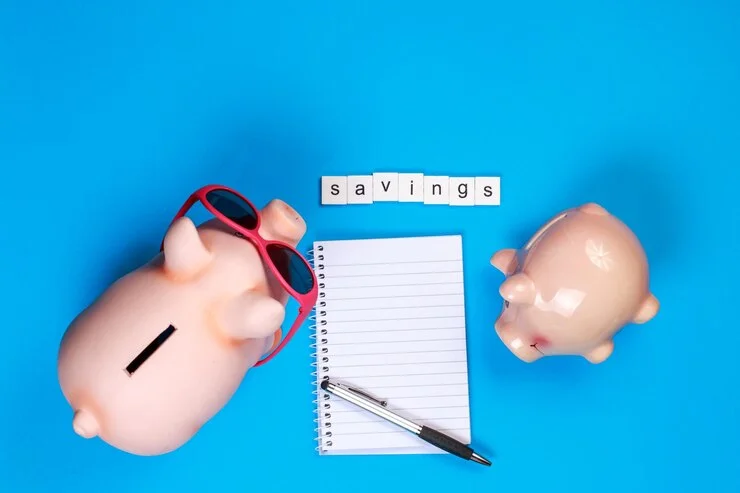How to Prioritize Debt Repayment vs Emergency Savings?

Here’s the next section of your guide with clear, actionable advice and simple structure to keep your tone consistent:
Step 2: List All Your Debts
Write down each debt you owe. Include:
-
Balance
-
Minimum monthly payment
-
Interest rate
This helps you see the full picture. Sort your list by interest rate — highest to lowest. This shows which debt costs you most over time.
Step 3: Focus on High-Interest Debt
Once your mini emergency fund is set, target high-interest debt first — like credit cards or payday loans. These grow fast and drain your money.
Use the debt avalanche method:
-
Pay the minimum on all debts.
-
Use extra money to pay off the highest-interest one first.
-
When one is gone, move to the next.
This saves more money in the long run.
📝 Tip: If high-interest debt feels overwhelming, consider a balance transfer or consolidation loan to lower your rate — but only if it makes sense and you won’t add new debt.
Step 4: Add to Savings Gradually
Once your most expensive debt is shrinking, start growing your emergency savings. Aim for 1–3 months of expenses, then build up to 6 months if possible.
Ways to grow savings:
-
Set up auto-transfers on payday
-
Use a high-yield savings account
-
Save windfalls (like tax refunds or gifts)
This fund protects you from future setbacks — without needing to borrow again.
Step 5: Adjust as Life Changes
Your plan is not fixed. Revisit it often. If you lose income, pause extra debt payments and focus on saving. If you get a raise, boost both savings and payments. Life changes — your money plan should, too.
The Balanced Formula: 80/20 Rule
When in doubt, try this:
-
80% of extra money toward debt
-
20% into savings
This way, you stay protected while also cutting your debt down steadily.
Final Thoughts
You don’t need to choose one over the other. The smartest move is to start small with savings, then aggressively tackle debt, and finally grow your financial cushion over time. Each step gives you more control.
Debt freedom and financial security aren’t just possible — they’re a result of steady, balanced effort. Start now, one step at a time.
Would you like a printable worksheet to track this plan?
List All Your Debts and Their Costs

Here’s the next section of your guide, keeping the same clear and actionable tone:
Step 5: Stay Consistent with Monthly Habits
Now that you’ve chosen your debt plan and started saving, build strong habits:
-
Pay on time every month to avoid fees and protect your credit score.
-
Set calendar reminders or automate payments so you never miss a due date.
-
Review your spending weekly and cut back on anything non-essential.
Each small action keeps you moving forward.
Step 6: Use Extra Cash Wisely
Got a bonus, tax refund, or gift? Don’t spend it all. Use it to:
-
Pay off a chunk of debt, or
-
Boost your emergency savings
Even small lump sums can make a big impact.
Step 7: Recheck and Adjust Every 3 Months
Life changes. Your plan should too. Every few months:
-
Check your debt balances
-
Review your savings progress
-
Adjust your strategy if needed
If one method isn’t working, switch. If you’ve had success, celebrate and keep going.
Final Takeaway
You don’t have to choose between debt freedom or savings. The best plan balances both — starting with a small safety net, cutting down costly debt, then building full financial security.
Step by step, you’ll build peace of mind.
Step by step, your money will work for you.
Would you like a free budgeting template to help track debt and savings progress?
Adjust Your Budget

Your final section is excellent — it keeps the same clear tone and practical style that runs throughout your guide. Here’s a quick review and a lightly edited version for flow, clarity, and polish:
Step 6: Balance Repayment and Savings
Once your mini emergency fund is in place, begin splitting your extra cash. A simple rule is 70/30 — put 70% toward debt and 30% toward savings. This lets you grow your emergency fund without slowing debt progress.
As your savings grow, you can adjust the split:
-
Feel secure? Shift to 90/10 or even 100% debt until you’re debt-free.
-
Still building your full emergency fund? Keep the 70/30 or even lean more toward savings.
Just be sure you don’t dip below three months of essential costs in your savings account.
Step 7: Use Windfalls Wisely
Got a bonus, tax refund, or gift? Use it with purpose:
-
Split it: Half to debt, half to savings.
-
Target one goal: If you’re far from your full fund, focus on savings. If you’re close, hit the debt hard.
This helps you reach goals faster without wasting your chance.
Step 8: Review and Adjust Regularly
Life shifts. Your income may change. Expenses may rise or fall.
Every three months, review:
-
How much debt you’ve paid
-
How much savings you’ve built
-
Whether your current split still fits your situation
If you get a raise or reduce expenses, use part of the extra to boost savings and part to cut debt faster. Keep your plan flexible. That’s how it lasts.
Final Takeaway
By building a small savings buffer and choosing the right repayment method, you avoid debt traps and prepare for life’s surprises.
It’s not about choosing between debt or savings.
It’s about creating a plan that supports both.
Start small. Adjust as you go. Your future self will thank you.
Would you like a printable checklist or spreadsheet to help track these steps?






